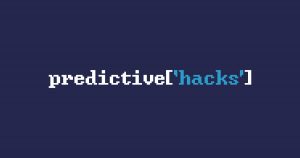AWS CLI allows us to interact with the AWS from the command line, known also as terminal. A very common command is the:
aws s3 ls s3://my-bucket/my-path/
where the output is like:
2021-11-18 15:55:20 29161259 file_01.csv 2021-11-18 15:55:21 29137661 file_02.csv 2021-11-18 15:55:21 29154017 file_03.csv 2021-11-18 15:55:20 29160631 file_04.csv 2021-11-18 15:55:20 29148803 file_05.csv 2021-11-18 15:55:20 29155569 file_06.csv 2021-11-18 15:55:20 29169410 file_07.csv 2021-11-18 15:55:20 29152556 file_08.csv
As we can see, the size of the files is in bytes. If we want the output to be in a “human-readable format” and also to have a summary of the folder we can add the following flags to the ls command:
aws s3 ls s3://my-bucket/my-path/ --human-readable --summarize
And we get:
2021-11-18 15:55:20 27.8 MiB file_01.csv 2021-11-18 15:55:21 27.8 MiB file_02.csv 2021-11-18 15:55:21 27.8 MiB file_03.csv 2021-11-18 15:55:20 27.8 MiB file_04.csv 2021-11-18 15:55:20 27.8 MiB file_05.csv 2021-11-18 15:55:20 27.8 MiB file_06.csv 2021-11-18 15:55:20 27.8 MiB file_07.csv 2021-11-18 15:55:20 27.8 MiB file_08.csv Total Objects: 8 Total Size: 222.4 MiB
Finally, if you want to see the size of all folders and subfolder in a human readable format, you can add the –recursive flag. For example:
aws s3 ls s3://my-bucket/ --human-readable --summarize --recursive



